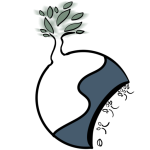“Consider the composition of the I Ching:it progresses from the 8 Trigrams to the 64 Hexagrams, and further to the 384 Yao (lines). Each Yao is depicted as two crossed lines—like two ✗ marks. Think of how math teachers grade: ✗ for wrong answers, ✓ for correct ones. But what is that ✓? It’s the Big Dipper—its ladle shape is the ✓. The West never adopted this; they use circles (○), see?
Why do we use ✗? It signifies judgment. For instance: a tree in the forest is merely a tree, but once a carpenter fells it and crosses its pieces—doesn’t it transform into tables, stools, or chairs?
As researchers, you must trace the origin of ‘the single stroke that parted heaven and earth.’ How did this primal stroke emerge? Intercrossing generates culture. Frankly, observe how people today rarely err—and thus culture withers, for culture is born of such crossings. Much in the Zhouyi arises from intersections; I’ll skip details here, but pose your questions—we’ll explore them together.
Take the Jing Gua (经卦, Primary Trigrams). Why ‘Jing’? These eight are singular trigrams—nature’s eight elemental forces. When these forces shift, intercross, repeat, or overlap—the 64 hexagrams emerge (8 × 8 = 64).
Yet the 64 hexagrams alone cannot capture the world’s complexity—hence we turn to the Yao. Each hexagram has six lines, but all lines distill to one stroke —‘one stroke parts heaven and earth,’ as Laozi’s Daodejing states: ‘The One begets the Two.’ And what does ‘One begets Two’ yield? Liang Yi (两仪, Two Forms)—like two wings. Note how the I Ching expresses everything through imagery, symbolism, and aesthetic language:

发表回复